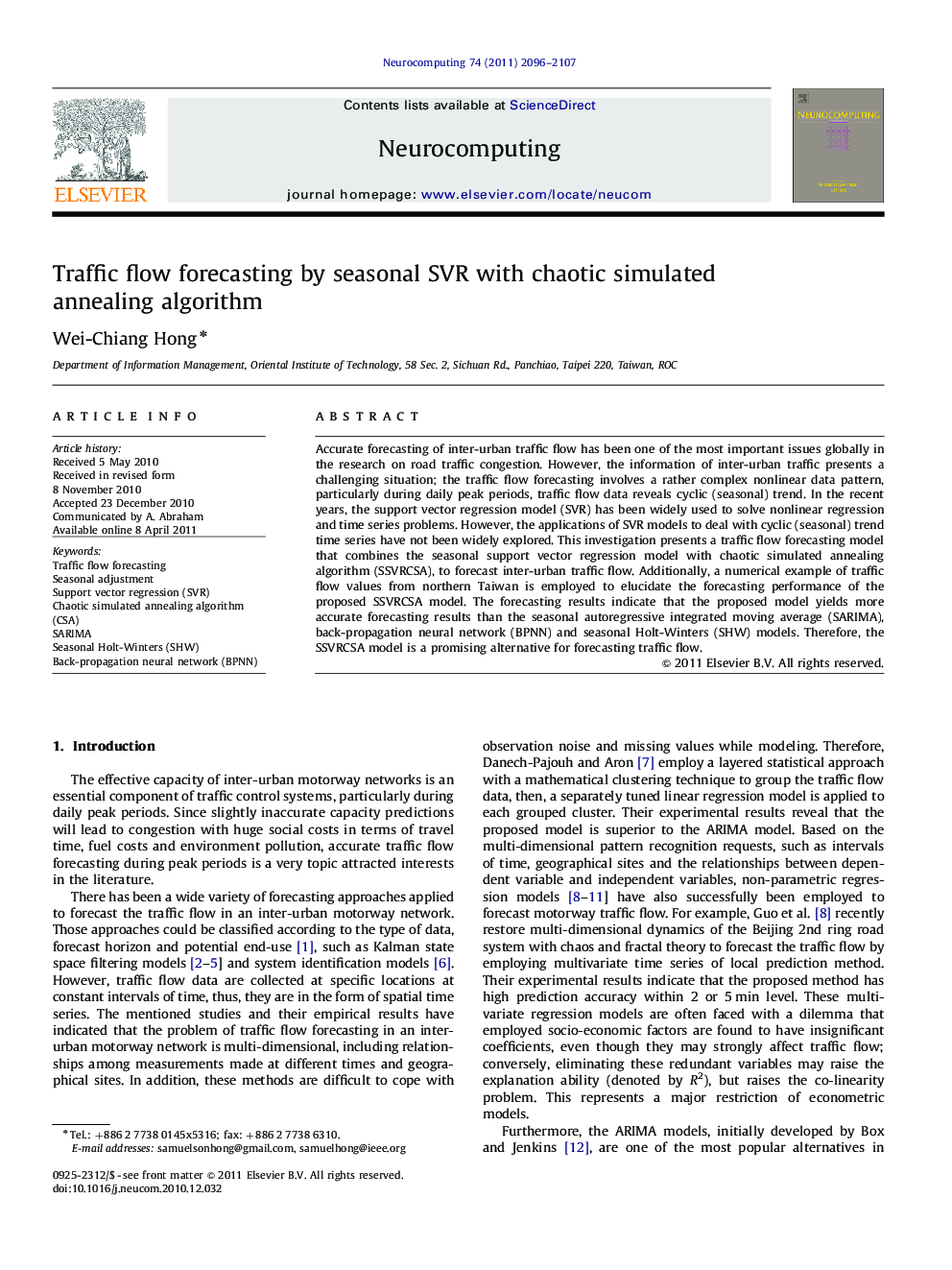| Article ID | Journal | Published Year | Pages | File Type |
|---|---|---|---|---|
| 410185 | Neurocomputing | 2011 | 12 Pages |
Accurate forecasting of inter-urban traffic flow has been one of the most important issues globally in the research on road traffic congestion. However, the information of inter-urban traffic presents a challenging situation; the traffic flow forecasting involves a rather complex nonlinear data pattern, particularly during daily peak periods, traffic flow data reveals cyclic (seasonal) trend. In the recent years, the support vector regression model (SVR) has been widely used to solve nonlinear regression and time series problems. However, the applications of SVR models to deal with cyclic (seasonal) trend time series have not been widely explored. This investigation presents a traffic flow forecasting model that combines the seasonal support vector regression model with chaotic simulated annealing algorithm (SSVRCSA), to forecast inter-urban traffic flow. Additionally, a numerical example of traffic flow values from northern Taiwan is employed to elucidate the forecasting performance of the proposed SSVRCSA model. The forecasting results indicate that the proposed model yields more accurate forecasting results than the seasonal autoregressive integrated moving average (SARIMA), back-propagation neural network (BPNN) and seasonal Holt-Winters (SHW) models. Therefore, the SSVRCSA model is a promising alternative for forecasting traffic flow.
